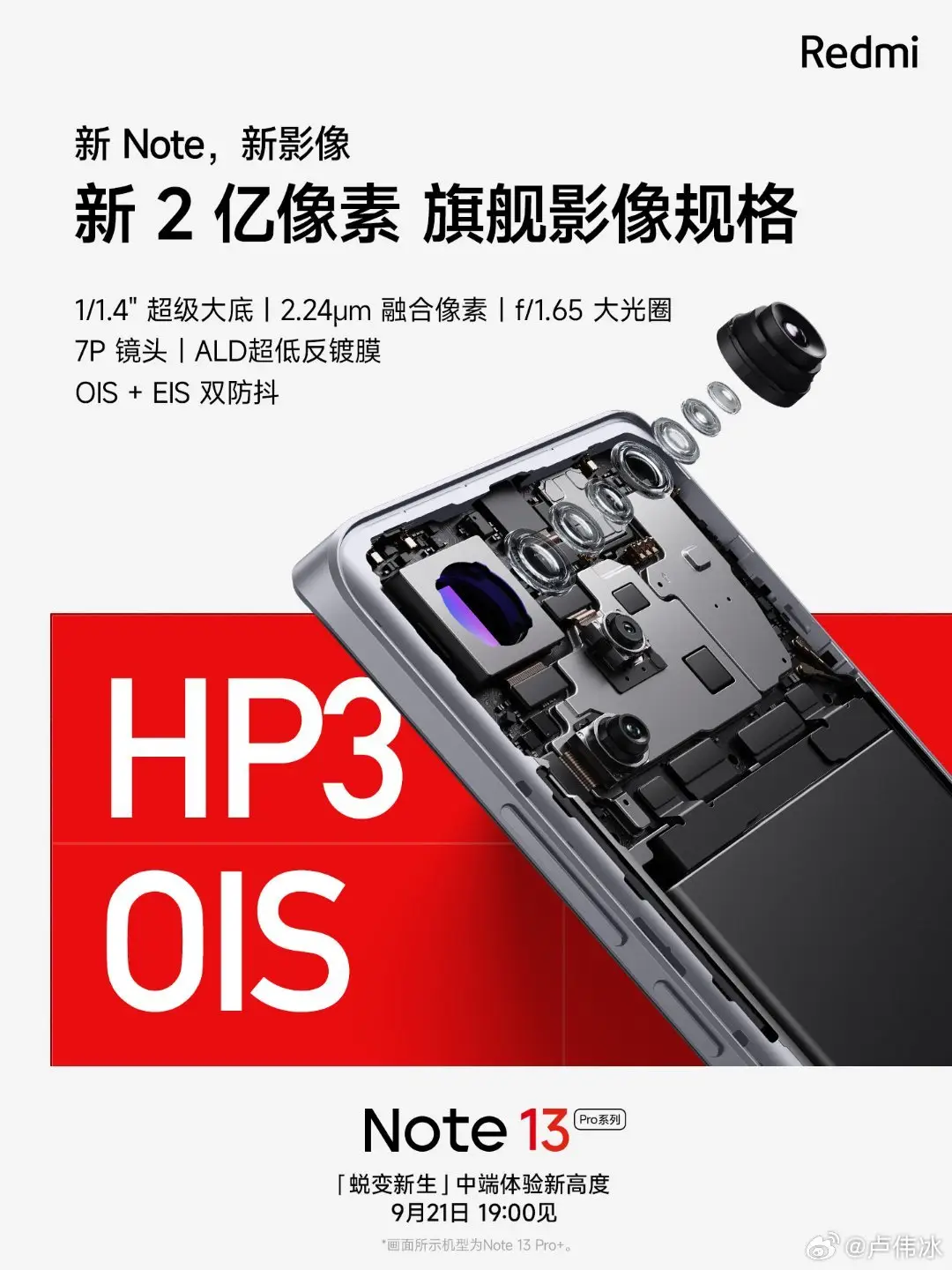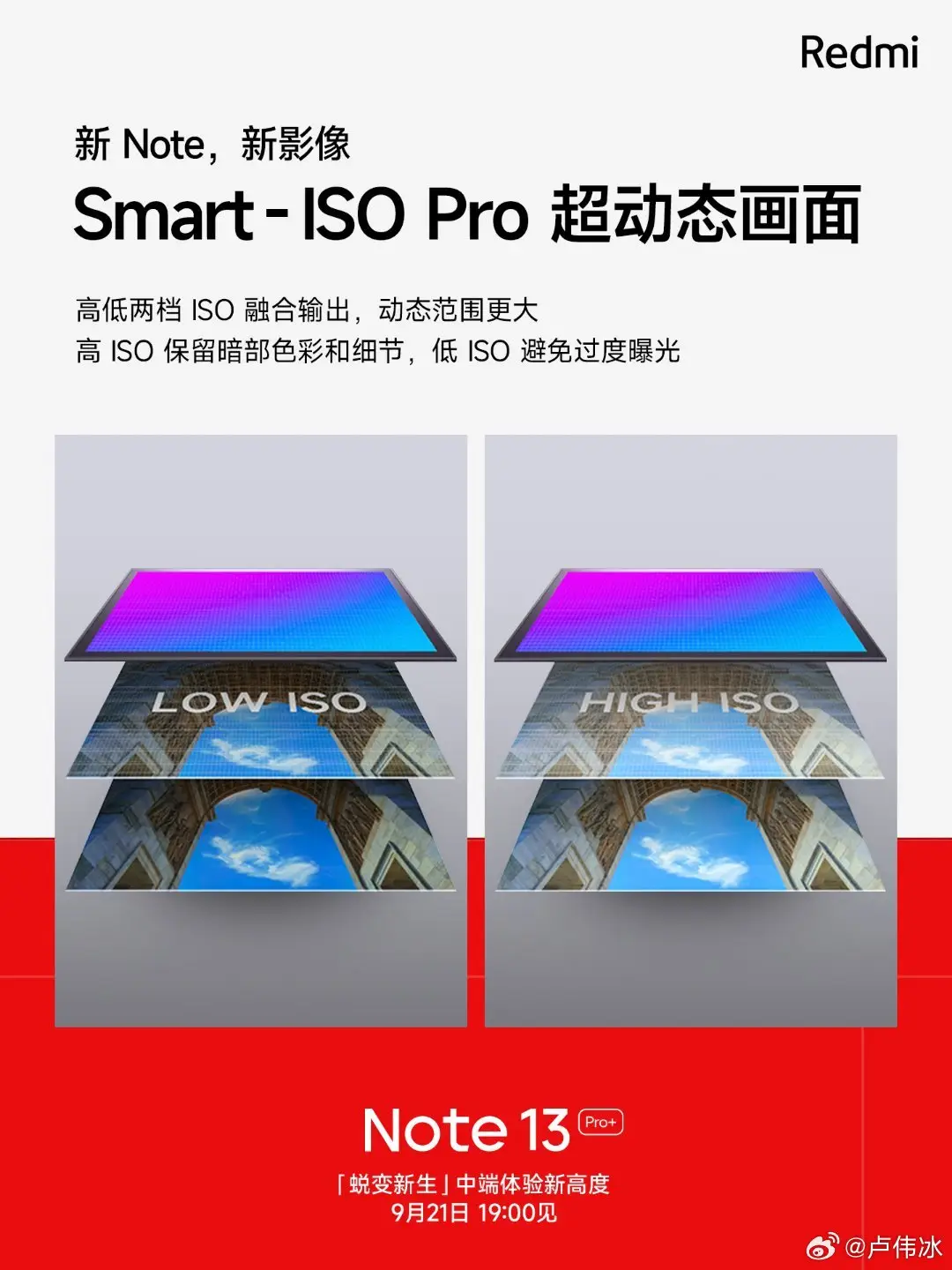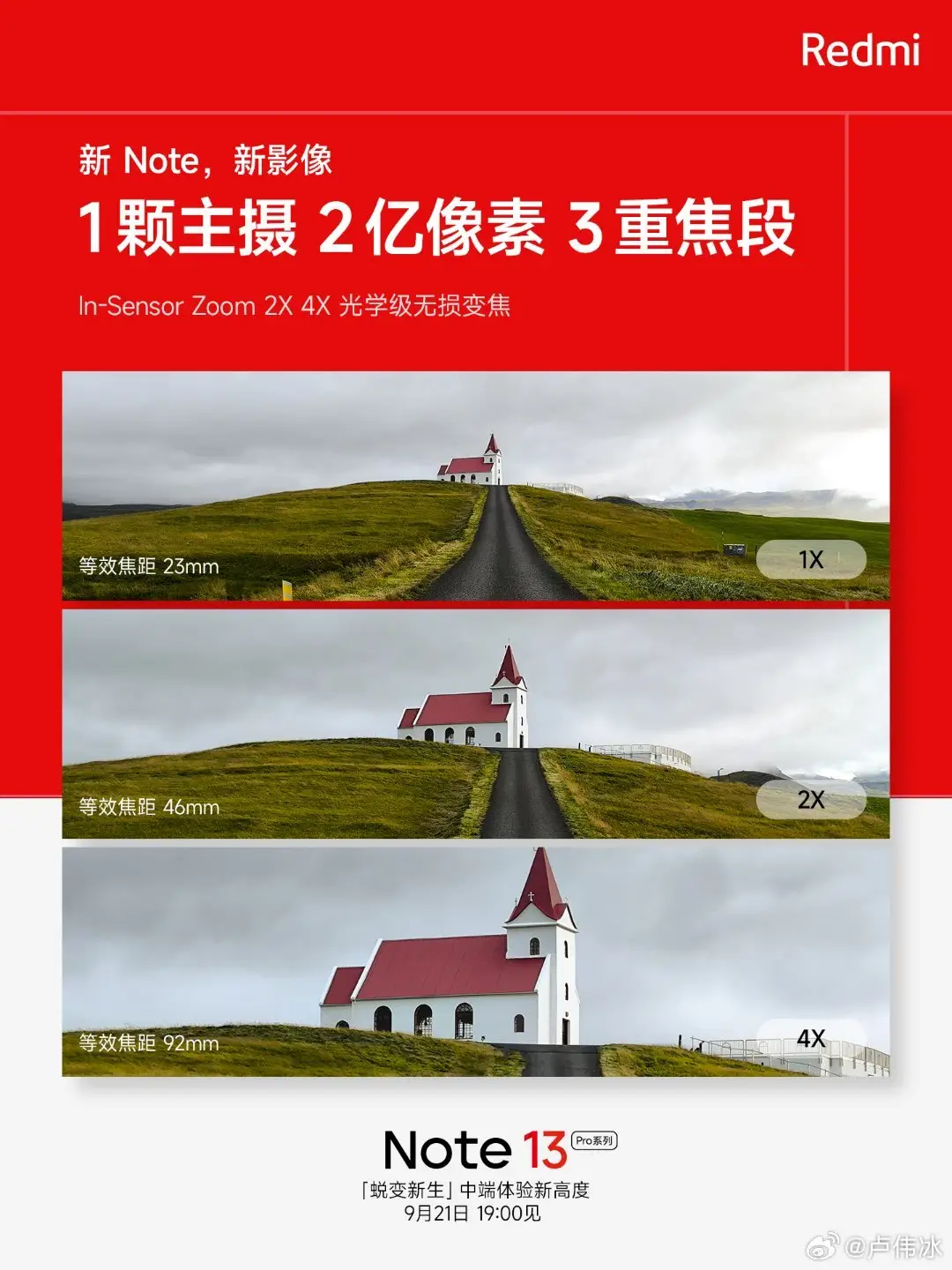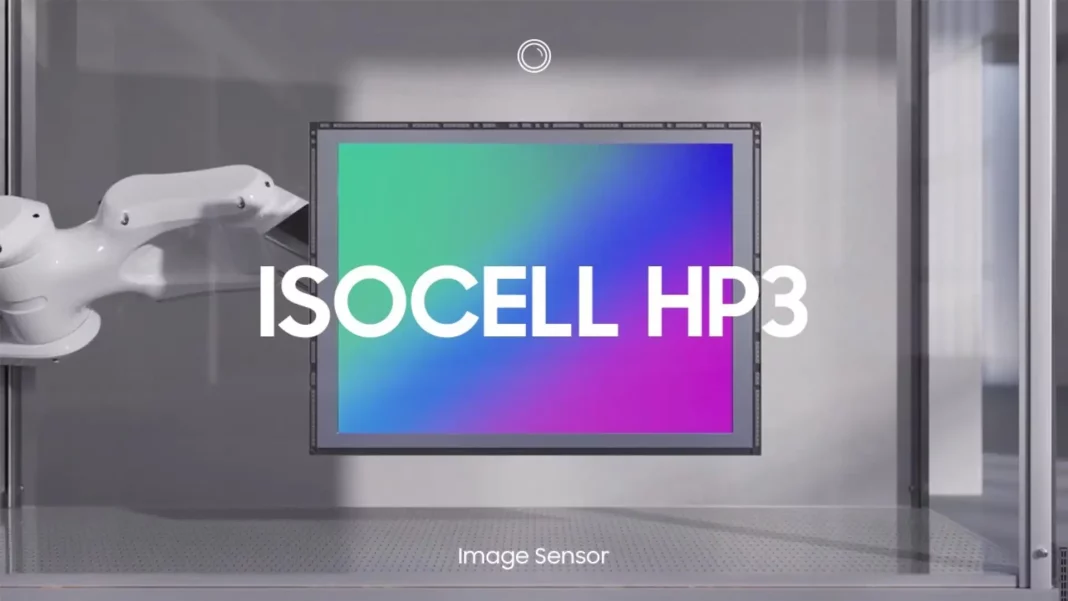Not only does the best of the Redmi Note 13 series, the Pro+ gets a "proper" camera, if not the Pro too. But today it was mostly the Pro+ that was on the agenda. In the person of a really good Samsung ISOCELL HP3 Discovery Edition camera unit, made uniquely just for Redmi.

The Redmi Note 13 Pro+ Samsung HP3 Equipped with Discovery Edition sensor, 1/1.4-inch photosensitive surface, 2.24 μm pixel, 7P lens, f/1.65 wide aperture. OIS + EIS dual anti-shake support, equipped with Xiaomi Imaging Engine imaging.

The Pro+ model also supports Smart ISO Pro Super Dynamic, which uses high and low ISO fusion output to achieve a greater dynamic range. High ISO preserves colour and detail in dark areas, while low ISO avoids overexposure.

The Redmi Note 13 Pro series supports In-Sensor Zoom, which enables 2X and 4x optical zoom with no loss of optical zoom. In addition, this new phone supports 200 megapixel ultra-fast shooting, taking just 1.3 seconds to take a single photo. The official claim is that the 35% is faster than its competitors.
Samsung ISOCELL HP3
Samsung introduced the 200 MP sensor last year, called ISOCELL HP3. It has the "industry's smallest pixel size" of just 0.56 μm, which is 12% smaller than its predecessor. It promises faster autofocus and even clearer HDR thanks to a new algorithm for superimposing images.
The HP3 sensor arrived nine months after the ISOCELL HP1, technically the first 200 MP camera sensor for smartphones. Since then, Samsung has managed to reduce the pixel size from 0.64 μm, making the new sensor 1/1.4" in size - around 20% smaller than its predecessor.
4-in-1 binning gives 1.12 μm pixels for 50 MP photos. For ultrared photos, the new sensor also supports 16-in-1 binning for a huge 2.24 μm pixel and 12.5 MP photos.
The ISOCELL HP3 features Super Quad Phase Detection (QPD) autofocus technology, which means that all pixels in the sensor contribute to the autofocus capability. Comparable to Sony Semiconductor's 'Quad Pixel AF' system, Super QPD uses a single lens over four adjacent pixels, allowing the sensor to detect phase differences in the horizontal and vertical directions (cross-type). Samsung promises more accurate and faster autofocus performance for smartphone camera users.





















![[151] HyperOS heti hibajelentés](https://helloxiaomi.hu/wp-content/uploads/2024/04/hyperosbugreportindex-218x150.webp)


You must be logged in to post a comment.